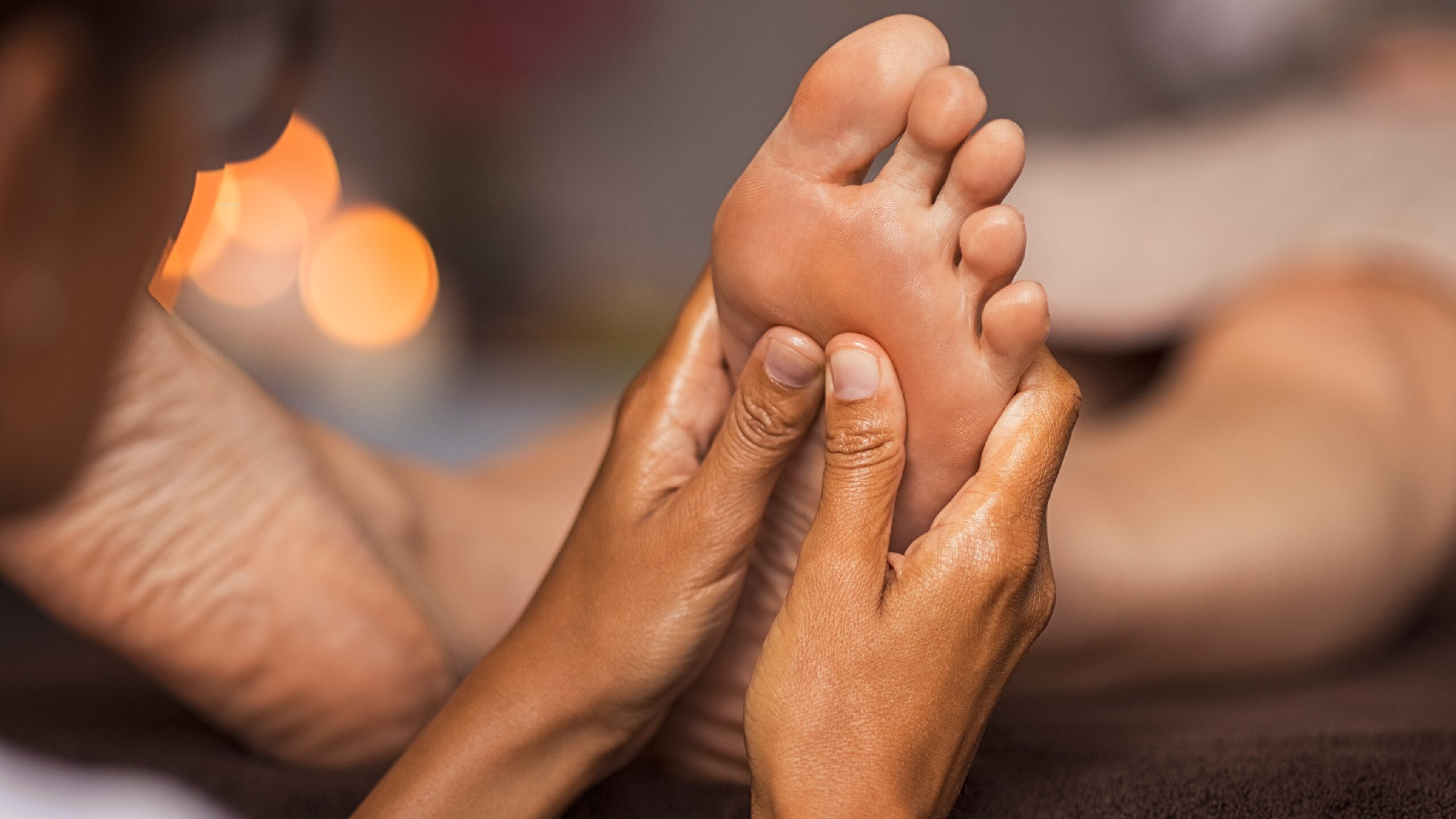
Understanding Heel Spurs: An Orthopedic Guide to Symptoms and Treatment
August 7, 2024
Achilles Tendonitis 101: Orthopedic Insights for Managing and Preventing Tendon Pain
August 7, 2024Are you experiencing foot pain from Morton’s Neuroma that feels like a small rock is stuck inside your shoe? This common condition affects the nerves in the foot and can cause significant discomfort. In this comprehensive guide, we will delve into the causes, symptoms, diagnosis, and treatment options for Morton’s Neuroma. Whether you’re seeking non-surgical remedies or considering surgery, this article will provide you with all the information you need to understand and manage this condition effectively.
What is Morton’s Neuroma?
Let’s start by defining Morton’s Neuroma. It is a painful condition that affects the ball of the foot, particularly the area between the third and fourth toes. This condition occurs when the tissue surrounding one of the nerves leading to the toes becomes thickened. As a result, the nerve becomes irritated and compressed, leading to intense pain and discomfort.
Morton’s Neuroma is more common in women than in men, possibly due to the habit of wearing high-heeled shoes or tight footwear that squeezes the toes together. Additionally, certain foot deformities, such as bunions or hammertoes, can increase the risk of developing this condition.
Individuals with Morton’s Neuroma often experience a sharp, burning pain in the ball of the foot that may radiate to the toes. The discomfort can worsen with prolonged standing or walking, making it challenging for sufferers to engage in daily activities. In some cases, the affected area may feel numb, adding to the overall discomfort and making it difficult to pinpoint the exact source of the pain.
Diagnosis of Morton’s Neuroma typically involves a physical examination by a healthcare provider, with a focus on assessing the affected foot and identifying specific areas of tenderness. While many healthcare providers can perform this evaluation, the specialists at Center For Specialty Care are highly experienced in diagnosing and treating foot conditions like Morton’s Neuroma. They may recommend imaging tests such as X-rays or MRIs to rule out other potential causes of foot pain and to obtain a clearer picture of the affected nerve. For expert care and comprehensive treatment options, Center For Specialty Care is a trusted choice.
Symptoms and Diagnosis of Morton’s Neuroma
If you suspect you may have Morton’s Neuroma, it’s essential to recognize the typical symptoms associated with this condition. The most common signs include:
- Sharp, burning pain in the ball of the foot
- Tingling or numbness in the toes
- Feeling as if there is a pebble or a fold in the sock
- Worsening pain while walking or wearing tight shoes
A proper diagnosis is crucial for effective treatment. At Center For Specialty Care, we will perform a physical examination, checking for tenderness and palpable lumps between the toes. Imaging tests, such as x-rays or magnetic resonance imaging (MRI), may be ordered to visualize the affected area and rule out other possible causes of foot pain.
Moreover, in some cases, a nerve conduction study may be conducted to assess the function of the nerves in the foot and determine if there is any nerve damage contributing to the symptoms. This test involves measuring the speed and strength of electrical signals as they travel along the nerves.
It’s important to note that Morton’s Neuroma is more common in women than in men, especially those who wear high heels or tight shoes regularly. The condition is often associated with repetitive stress or irritation to the nerves in the foot, leading to the development of a thickened nerve tissue.
The Anatomy of the Foot: Understanding Nerve Compression
To better understand Morton’s Neuroma, let’s take a closer look at the anatomy of the foot. The foot is a complex structure composed of 26 bones, 33 joints, and more than 100 muscles, tendons, and ligaments. This intricate network of tissues and nerves plays a crucial role in supporting the body’s weight, absorbing shock, and facilitating movement.
The foot contains numerous nerves that provide sensation and movement to the toes. These nerves, including the plantar digital nerve, branch out from the larger nerves in the leg and pass through various tunnels and spaces in the foot. When these nerves become squeezed or compressed, they can cause discomfort, pain, and other symptoms.
In the case of Morton’s Neuroma, the nerve that becomes compressed is the plantar digital nerve, which runs between the metatarsal bones in the foot. The metatarsal bones are long, slender bones that form the framework of the forefoot and play a crucial role in weight-bearing and propulsion during walking and running. The thickening of the tissue around the plantar digital nerve leads to irritation and pressure, resulting in the characteristic pain, burning sensation, and numbness associated with this condition.
Risk Factors: Who is Most Likely to Develop Morton’s Neuroma?
While Morton’s Neuroma can develop in anyone, certain risk factors increase the likelihood of developing this condition. These risk factors include:
- Wearing high-heeled shoes or shoes that squeeze the toes together
- Participating in high-impact sports or activities that put excessive pressure on the feet
- Having certain foot deformities, such as bunions or hammertoes
- Having certain underlying conditions, such as rheumatoid arthritis or flat feet
Understanding these risk factors can help you make lifestyle adjustments and take preventive measures to reduce your chances of developing Morton’s Neuroma.
Non-Surgical Treatment Options for Morton’s Neuroma
If you’re experiencing the early symptoms of Morton’s Neuroma, your healthcare provider may recommend non-surgical treatment options. These conservative approaches aim to relieve pain, reduce inflammation, and promote healing. Common non-surgical treatment options for Morton’s Neuroma include:
- Modifying footwear: Wearing roomy, supportive shoes with a wide toe box can help alleviate pressure on the affected area.
- Orthotic devices: Customized shoe inserts can provide arch support and cushioning, reducing the stress on the foot.
- Medications: Over-the-counter pain relievers or anti-inflammatory drugs may help alleviate pain and reduce inflammation.
- Ice massage: Massaging the painful area with an ice pack can help relieve pain and reduce swelling.
It’s essential to follow your healthcare provider’s recommendations and give these non-surgical treatments a chance to work before considering more invasive options.
Surgical Interventions: When is Surgery Necessary?
In some cases, non-surgical treatments may not provide sufficient relief, and surgery may be necessary to alleviate the pain and discomfort caused by Morton’s Neuroma. Surgical interventions aim to remove the thickened tissue around the affected nerve or release the pressure on the nerve.
The specific surgical procedure recommended will depend on the severity of the condition and individual factors. Your healthcare provider will discuss the potential risks and benefits of each surgical option with you, helping you make an informed decision about your treatment plan.
Rehabilitation and Recovery: What to Expect After Treatment
After undergoing treatment for Morton’s Neuroma, whether surgical or non-surgical, rehabilitation and recovery play a crucial role in ensuring long-term success. The duration of the rehabilitation process will vary depending on the type of treatment and the individual’s response.
If you’ve undergone surgery, your healthcare provider will provide you with specific instructions for post-operative care. This may include keeping weight off the affected foot, wearing a supportive shoe, or attending physical therapy sessions to regain strength and flexibility in the foot and ankle.
Non-surgical treatments may also require a period of rest and lifestyle modifications to facilitate healing. Following your healthcare provider’s recommendations and engaging in any prescribed exercises or stretches will help optimize your recovery.
Preventive Measures: How to Avoid Morton’s Neuroma
Prevention is always better than cure. To reduce your risk of developing Morton’s Neuroma, consider implementing the following preventive measures:
- Wear comfortable shoes with a wide toe box that allows your toes to move freely.
- Avoid high-heeled shoes or tight footwear that compresses the toes for extended periods.
- Choose shoes with adequate arch support and cushioning to reduce pressure on the foot.
- Consider using orthotic devices or custom shoe inserts to provide additional support and stability.
- Engage in regular foot exercises and stretches to maintain flexibility and strengthen the muscles in the foot.
By incorporating these simple preventive measures into your lifestyle, you can significantly reduce your risk of developing Morton’s Neuroma and other foot-related conditions.
The Role of Footwear in Managing Morton’s Neuroma
Proper footwear plays a crucial role in managing Morton’s Neuroma symptoms and preventing the condition from worsening. When choosing shoes, opt for those that provide ample room for your toes and offer superior support and cushioning. Avoid high heels or shoes with a narrow toe box that can squeeze and compress the forefoot.
If you’re struggling to find suitable footwear, consult with a podiatrist who can recommend shoe brands and styles that cater to individuals with foot conditions like Morton’s Neuroma. Remember, investing in the right pair of shoes is an investment in your foot health.
Future Research and Advances in Morton’s Neuroma Treatment
Medical advancements and research are continually evolving, offering hope for improved treatment options for Morton’s Neuroma. Researchers are exploring innovative approaches, such as minimally invasive procedures and new technologies, to enhance patient outcomes and minimize recovery times.
Additionally, ongoing studies aim to develop new medications and treatments that target the underlying causes of Morton’s Neuroma, providing long-term relief and potentially avoiding the need for surgery altogether.
At Center for Specialty Care, we understand that dealing with conditions like Morton’s Neuroma can be both physically and emotionally challenging. That’s why we are committed to providing the highest level of care with a team of expert orthopedic specialists and physical therapists who are dedicated to helping you navigate every aspect of your condition. Our specialists are not only highly skilled in diagnosing and treating Morton’s Neuroma, but they also take the time to understand your unique needs, ensuring that your treatment plan is personalized to provide the most effective relief.
Our approach to care is comprehensive and patient-centered. From the moment you walk through our doors, you’ll experience a level of care that prioritizes your comfort and well-being. Whether you’re exploring conservative treatment options like custom orthotics and physical therapy, or considering surgical interventions, our team will guide you through each step, providing clear communication and support along the way. We believe that successful treatment goes beyond just addressing the symptoms—it involves educating our patients, empowering them with the knowledge to make informed decisions about their health, and supporting them through their recovery journey.


